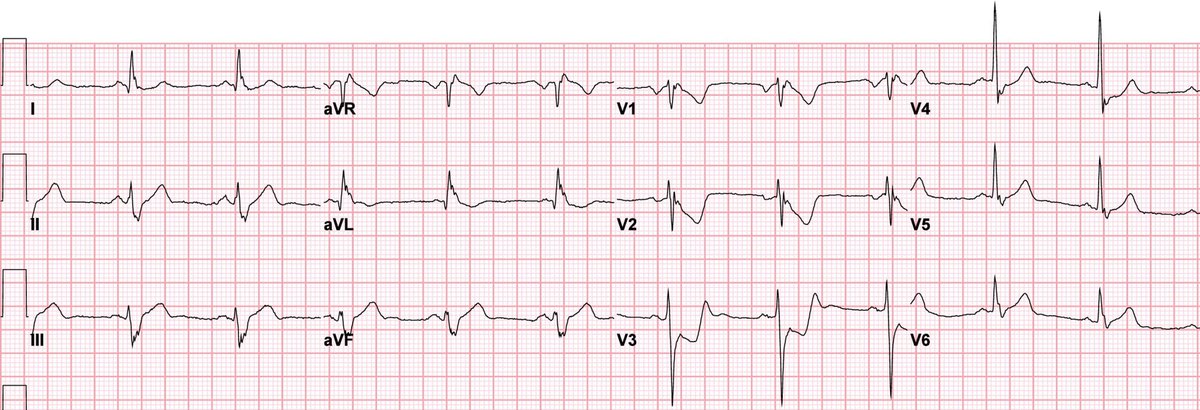
A 17-year-old boy was rushed to the ER by his brothers struggling to breathe...
[thread]
[thread]
He was in profound respiratory distress with deep retractions breathing 40 times per minute. It turns out he was a severe asthmatic in the midst of the worst asthma attack of his young life.
[2/x]
[2/x]
He was cyanotic and barely moving any air. His Pulse Ox registered 30% with a perfect waveform. His eyes rolled back and he lost consciousness right in front of us. He was on the brink of death...
[3/x]
[3/x]
His brothers stood right by his side just staring at him with tears streaming down their faces. Their sense of desperation was palpable. You could feel them wanting to do literally anything to help save their little brother.
[4/x]
[4/x]
There’s a natural reflex and momentum to want to intubate these patients right away. But here’s a message I want to get out:
INTUBATION IS THE LAST THING A CRASHING ASTHMATIC NEEDS.
[5/x]
INTUBATION IS THE LAST THING A CRASHING ASTHMATIC NEEDS.
[5/x]
Even if the intubation is flawless, it you’ve done nothing to solve the underlying problem. And once the tube is in, you will have a hell of a time trying to manage them with positive pressure on a ventilator.
[6/x]
[6/x]
Ventilated asthmatics are at high risk for profound hyperinflation from severe air trapping. This can lead to dangerously increased intrathoracic & plateau pressures which can result in barotrauma, compromised venous return, and ultimately cardiac arrest.
[7/x]
[7/x]
So here’s what we did. First, we sat him straight up to 90 degrees. This simple positioning maneuver accomplishes three main things: it minimizes atalectasis, optimizes FRC, and decreases the work of breathing.
[8/x]
[8/x]
We then placed him on BIPAP right away running continuous high-dose combination aerosols right through the mask. It’s very important to nebulize BOTH Albuterol AND Ipratropium which together are more effective than Albuterol alone.
[9/x]
[9/x]
We gave him 3 back-to-back IM shots of .5mg Epinephrine (1.5mg total) while IVs were being placed by some amazing nurses. We then started him on an IV Epinephrine infusion at 20 micrograms per minute.
[10/x]
[10/x]
Next we gave him 2 grams of Magnesium Sulfate, 125mg of Solumedrol, and 10mg of Decadron IV. Because steroids take time to work it’s very important to get these meds on board as soon as possible.
[11/x]
[11/x]
We considered Ketamine but held off in order to preserve his mental status exam. His O2 Sat started coming up and he began showing some signs of improvement.
But he was still in big trouble.
[12/x]
But he was still in big trouble.
[12/x]
We started him out on BIPAP at 14/4. PEEP (the bottom number) is controversial in asthmatics and I won’t go into details of that here but we elected to give him low level PEEP at 4 cm H2O.
[13/x]
[13/x]
The purpose of IPAP (the top number) is to help support ventilation and decrease work of breathing. But you must understand that the higher the IPAP, the bigger the Tidal Volume, and the more air the asthmatic must exhale...
[14/x]
[14/x]
And since asthma is primarily a problem of exhalation, IPAP in asthmatics is a double-edged sword. So, as he started improving and regaining strength, we down titrated his IPAP from 14...down to 12...then to 10...and ultimately down to 8 cm H2O.
[15/x]
[15/x]
As his lungs began to open up you could now hear his wheezing louder than ever. Remember that when severe asthmatics start to open up and move ↑ air, they will often sound WORSE—but this is often a paradoxical sign of clinical improvement.
[16/x]
[16/x]
For an entire hour I didn’t leave the room. As our treatments took effect the boy really started to improve. He was breathing slower and easier. His lungs sounded much better. I’ll never forget the moment he opened his eyes and started looking around the room.
[17/x]
[17/x]
This is a crucial moment in an asthmatic’s clinical course. I can’t stress enough how important it is to talk to these patients and reassure them in a calm voice.
It’s terrifying to not be able to breathe, and anxiety worsens respiratory distress.
[18/x]
It’s terrifying to not be able to breathe, and anxiety worsens respiratory distress.
[18/x]
After an hour and a half the boy looked like a completely different person. We admitted him to the PICU where he was watched closely overnight. He was never intubated. He did great and was discharged home with his family the very next day.
[19/x]
[19/x]
There’s no doubt in my mind that without medical intervention this young boy would have died within minutes. And that, if we would’ve decided to intubate him when he presented, he also might not be alive today.
[20/x]
[20/x]
Please remember the concepts in this thread and share them with others and I promise you will save lives.
[End]
[End]
• • •
Missing some Tweet in this thread? You can try to
force a refresh





